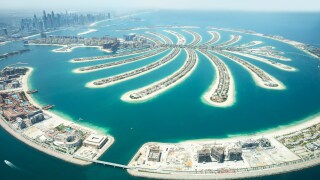The notion that data centres would experience blackouts over the winter attracted widespread media attention in recent months.
In September 2022, a report from The Times indicated that data centre operators had asked the UK government to give them short-term priority for energy use in the event of restricted power. The request was made to ensure that public services such as banking, and healthcare remained operational.
Although London-based colocation provider Telehouse had made arrangements in case of power cuts, Mark Pestridge, the senior director of customer experience, says this request The Times reported on is not something that it was aware of and “certainly not something that it has asked for”.
“While this is extremely unlikely, prioritisation of energy use would enable data centre operators to keep their customers’ critical systems operational and their business operating,” Pestridge says.
Reports of data centres asking for preferential treatment if electricity supply was rationed have continued to swirl, even in spite of repeated reassurance by the sector and from government officials in some cases.
Though most of those reports have been “light on detail”, according to Wayne Mitchell, who has 25 years of experience in the energy business, 14 of which with npower and E.ON.
“I’m disappointed that reporting of the winter outlook for energy has been poor… and focuses on a hugely unlikely worst-case scenario,” Mitchell wrote in a blog post for the Kao Data, a London data centre. (See p38, Big Interview: David Bloom.) “It’s particularly frustrating to hear media reporting the risk of blackouts, when in fact data centres will be protected.”
Pestridge echoes that sentiment. He says that while Telehouse was unable to completely rule out the possibility of blackouts over the winter, the firm had been assured by its energy suppliers that it was a very small risk.
“Our proactive measures and arrangements with energy suppliers help to ensure that we’re protected against organised blackouts [that were] discussed in the UK government’s reasonable worst-case scenario planning,” he says.
Pestridge adds that Telehouse and other data centre operators are important to the UK’s national infrastructure and have agreements with suppliers to maintain business continuity in the event of an energy supply shortage.
“Telehouse has plans in place to ensure the stability of operations across our London data centre campus.”
“This includes emergency fuel supplies that can be deployed within four hours,” he says.
Worst-case scenarios
Under the most extreme scenario for maintaining the operation of the electricity the National Grid, the UK’s electricity system operator (ESO), may call upon a process called the electricity supply emergency code (ESEC) legislation that grants “exceptional powers for controlling the sources and availability of energy”.
This, Mitchell says, is a well-established process and in the event of an emergency, there are three levels of activity.
Initially, the UK government can issue appeals to the nation for voluntary restraint in electricity consumption – something which Westminster did. Next, the government could issue directions to restrict the consumption of electricity by industry and commerce. Finally, there are rota disconnections and associated restrictions – in other words, rolling blackouts.
“[Blackout] is a really emotive word and we’re so far from it right now that it’s hard to believe,” Mitchell tells Capacity.
While the possibility of blackouts has garnered attention from several outlets, Mitchell maintains that any part of the country is at risk of a blackout at any time, and not due to problems with the security of supply.
“When we’ve had cold snaps and severe weather events, certain parts of the country have ended up in a blackout because of a physical event, either a transmission line gets taken down or a transformer is destroyed,” he says. “There are risks we face all the time, and the grid operators manage this for us.”
But Mitchell says it’s important to remember the National Grid has never used the ESEC process – even in extreme instances. He adds that John Pettigrew, the chief executive of the National Grid had been “widely misquoted” as saying that the UK should prepare for blackouts between 4-7pm on the coldest evenings during January and February.
“[Pettigrew] was talking about what might happen during a cold snap, and if gas supplies from Europe were restricted, which is essentially worst-case scenario again,” Mitchell adds.
Contingency plans
Yet in the unlikely case of a blackout, Pestridge says Telehouse has contingency plans in place to counter them. He says the company can maintain its data centre operations thanks to its backup generators in the unlikely event of a power interruption.
“Each of the five Telehouse data centre buildings at the London Docklands site has its own generators,” says Pestridge, “allowing operations to continue running for up to 48 hours.”
Luisa Cardani, head of the data centres programme at TechUK says that while blackouts will continue to remain unlikely, it is “crucial” for data centre operators to have contingency plans in case of disruption to the energy supply.
This, though, is something data centre operators are well aware of and is embedded into their business models. While data centre operators were already “perfectly prepared” this winter, this season’s cold weather has highlighted the need for operators to double-check all of their plans and make sure things are running as smoothly as possible.
“I think this winter, it has been an exacerbated crisis due to geopolitics, so it has become more urgent for the government to bring more accurate planning,” says Cardani.
She adds that while TechUK has been engaging with the government and data centre operators that may have had concerns, their worries do not come from them being surprised there may be blackouts.
“It’s more about refining those plans and ensuring that anywhere where [data centre operators] need clarification had been looked into,” says Cardani. “So really, I’d argue that they were very well prepared and remain very well prepared.”
Despite describing this winter as “mild” (despite occasional cold snaps pushing temperatures to 12-year lows), Cardani thinks there are still lessons that can be learned from the past few months.
“As part of [TechUK’s] engagement with the government, we’ve tried to get clarity in areas that our data centre operators felt they needed it,” she says.
Cardani adds that the 2022-23 winter also brought the idea of long-term sustainability to the forefront, and so some data centre operators have been stockpiling fuel for their generators, making sure they purchase extra energy where possible. Operators have also been ensuring they have systems in place, even for unlikely scenarios.
“So, it is about looking at the longer term and not just for next winter,” she says. “How can the industry keep making sure that they are as resilient as possible?”
The price isn’t right
There have not been any issues regarding the availability of energy and the consistency of supply in the UK according to Mitchell.
“But there have been actions that have been taken by the grid operators and gas network operators to make sure that the grid stays whole,” he says.
Thus, Mitchell believes the main worry for data centres over the last few months has been rising energy prices.
This issue certainly came to the forefront after Russia’s invasion of Ukraine on 24 February 2022 led to energy prices in Europe and the UK becoming “unmanageably volatile” according to Mitchell.
The instability of gas imports and the weaponisation of Russia’s gas pipelines, including the apparent sabotage of Nord Stream pipelines had a knock-on impact on UK energy prices, Mitchell says.
While the typical wholesale price for electricity in the United Kingdom two years ago was around £40/MWh, it now costs 10 to 20 times as much, depending on the month it is purchased.
Today, a year on from the start of the Ukraine war, several data centre contracts will be up for renewal and clients will “feel the bite” should energy prices continue to rise, Mitchell believes.
“For the harsher months of winter, namely January and February, the fundamental uses remain unchanged,” he adds.
Like Cardani, Tiny Haynes, principal edge computing infrastructure and services analyst for S&P Global, tells Capacity that this winter has been mild, but a future colder winter would raise prices even further.
“Therefore, data centres haven’t been hit with increased price rises or blackouts that a colder winter could have brought,” says Haynes.
He notes that some colocation providers have signed multi-year energy deals that have cushioned them from 2022’s price rises, although they should expect significant price rises when their deals end. This could have a detrimental effect on the industry as a whole, as higher energy costs mean higher operational costs during an economic downturn.
“This could place some organisations under economic threat,” says Haynes.
The analyst cites Sungard as an example. The colocation provider entered Chapter 11 bankruptcy last year in the United States, citing pricey colocation centres and covid-19 as business challenges that led the company to the decision.
As the wholesale price of energy has increased and the rates from energy suppliers have risen in tandem, Pestridge says data centre operators have had taken steps to mitigate the impact of increased costs on customers.
Telehouse has a flexible contract in place with Haven Power, uses internal and external specialist consultants to monitor market pricing and pivot accordingly, Pestridge says.
“It has also led to us developing a much longer terms strategy in terms of energy supply,” he says. “We’re working with specialist consultancies within the energy sector to ensure that we have a long-term strategy in place that will ensure surety of supply and mitigate any future spikes in wholesale pricing while also enhancing our sustainability credentials.”






